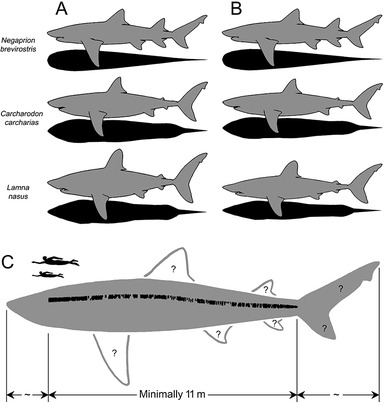Megalodon's true shape sheds light on aquatic gigantism
13 Mar 2025

A new study published in Palaeontologia Electronica has revealed fresh insights into the anatomy of the ancient megalodon, providing vital clues about how certain aquatic vertebrates evolved to gigantic size.
New research has revealed significant insights into the true body shape and proportions of the prehistoric shark Otodus megalodon, commonly known as megalodon, challenging the popular depiction of this ancient predator. Traditionally visualised as a massive version of today's great white shark, this new study provides evidence of a markedly different, more streamlined appearance, resembling modern lemon sharks.
An international research team, led by palaeobiologist Dr Kenshu Shimada from DePaul University, closely examined fossilised vertebrae of megalodon found in Belgium. Using these fossils, the scientists reconstructed accurate body proportions to better understand the actual physical structure of this prehistoric shark.
Their analysis revealed that megalodon's head comprised approximately 16.6% of its total body length, with its tail making up an impressive 32.6% of the body length. This discovery implies a significant deviation from earlier reconstructions based heavily on comparisons with robust sharks such as the great white.
The detailed calculations and reconstructions made by the research team suggest that the particular megalodon specimen studied would have measured around 16 metres (approximately 54 feet) in total body length. This places megalodon firmly among the largest marine predators ever documented.
Crucially, the team's detailed analysis has also shed light on the remarkable reproductive strategies of the species. Newborn megalodon sharks are estimated to have been extraordinarily large at birth, reaching nearly 3.9 metres (13 feet), making them among the largest marine newborns recorded in fossil history.
Beyond reshaping our image of this legendary predator, the research highlights critical insights into the phenomenon of aquatic gigantism. The sleeker body design revealed by the study suggests enhanced hydrodynamic efficiency, essential for maintaining agility and speed at massive sizes. This efficiency likely played a significant role in megalodon's evolutionary success, enabling it to sustain high-energy predation while growing to extraordinary lengths.
Understanding the structural adaptations of megalodon not only enriches scientific knowledge about prehistoric marine ecosystems but also offers important clues regarding the evolutionary pressures faced by giant aquatic animals. It opens pathways to exploring how similar adaptations may have benefited other large marine species throughout history.
By challenging traditional depictions and providing clear empirical evidence for a slender, efficient shape, Dr Shimada's team has not only clarified historical inaccuracies but also offered a deeper understanding of evolutionary constraints that enable marine creatures to achieve colossal dimensions.

